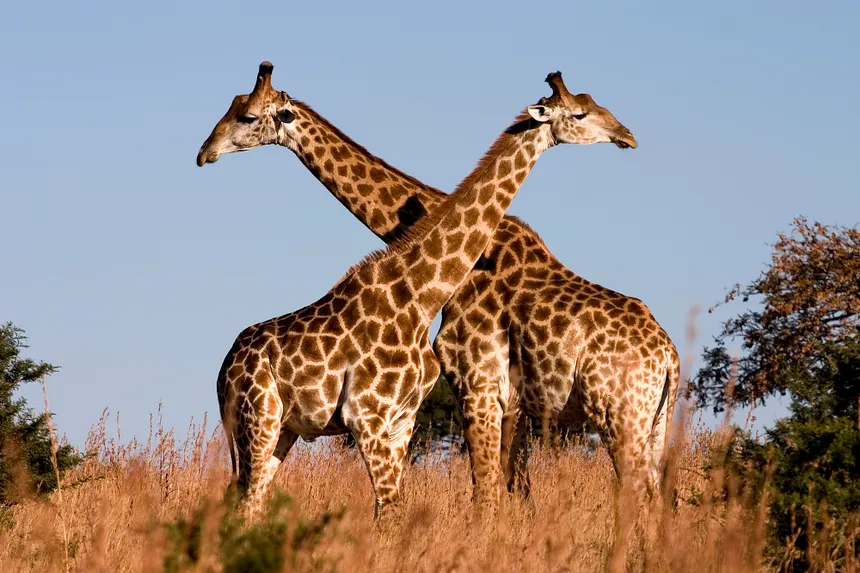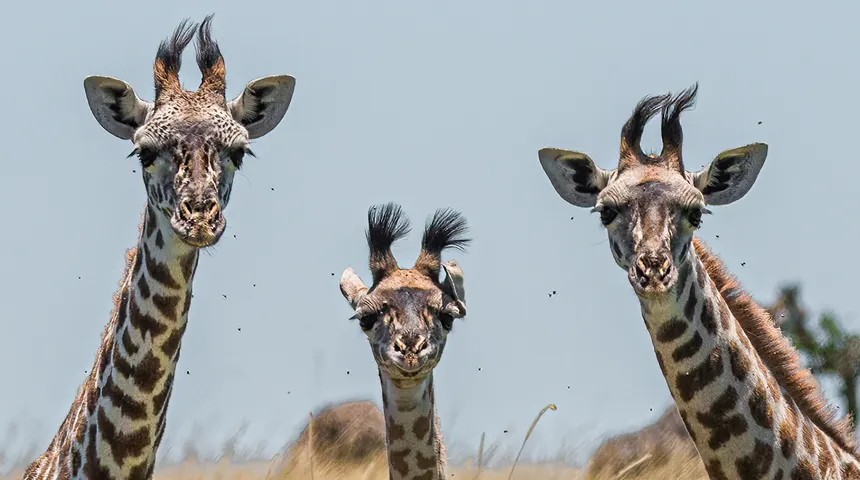“Counting Giants: How Many Giraffes Are Left in the World?”

The giraffe, with its long neck and towering elegance, is one of the most iconic animals of the African savannah. Despite its fame, many people are surprised to learn that giraffe populations are silently declining, earning them the nickname “the forgotten giants” in conservation circles. So, just how many giraffes are there in the world today? Let’s take a deep dive into giraffe population numbers, the threats they face, and efforts to protect them.
Global Giraffe Population: The Numbers
According to the Giraffe Conservation Foundation (GCF) and the International Union for Conservation of Nature (IUCN), the estimated total number of giraffes in the wild is:
Approximately 117,000 individuals (as of the latest global estimate)
This marks a drop of nearly 30% over the past 30 years, although some subspecies are recovering thanks to conservation efforts.

Giraffe Species and Subspecies Breakdown
Giraffes are not a single species, but rather four distinct species (recognized by GCF and genetic research), each with their own subspecies and range:
1. Northern Giraffe (Giraffa camelopardalis)
- Population: ~5,900
- Subspecies: West African, Nubian, and Kordofan
- Status: Critically endangered (some subspecies)
2. Reticulated Giraffe (Giraffa reticulata)
- Population: ~16,000
- Range: Northeastern Kenya, southern Ethiopia, Somalia
- Status: Endangered
3. Masai Giraffe (Giraffa tippelskirchi)
- Population: ~45,000
- Range: Central and southern Kenya, Tanzania
- Status: Endangered
4. Southern Giraffe (Giraffa giraffa)
- Population: ~51,000
- Subspecies: South African and Angolan
- Status: Least Concern (most stable population)
Why Are Giraffe Numbers Declining?
Several threats are contributing to the drop in giraffe populations:
1. Habitat Loss and Fragmentation
- Expansion of agriculture, logging, and urban development is reducing natural habitats.
- Fewer migratory corridors mean populations become isolated, weakening genetic diversity.
2. Poaching and Illegal Hunting
- In some regions, giraffes are poached for their meat, skin, tails, and bones.
- Myths around medicinal uses of giraffe body parts also contribute to illegal killings.
3. Human-Wildlife Conflict
- Farmers often see giraffes as a threat to crops and water sources, leading to retaliatory killings.
4. Climate Change
- Altered rainfall patterns affect vegetation availability, forcing giraffes to travel further for food and water.
Conservation Success Stories
Although the overall outlook is concerning, targeted conservation programs are starting to show results:
- Giraffe translocations to protected areas have helped reintroduce populations into former habitats.
- Community-based conservation in countries like Kenya and Namibia has empowered local people to protect giraffes.
- Giraffes have received increased media attention and research funding, helping drive awareness and policy change.
For example:
- The West African Giraffe, once down to just 49 individuals in the 1990s, has rebounded to over 600 today due to efforts in Niger.
Captive Giraffes
There are also an estimated 1,600 giraffes in captivity across zoos and conservation centers worldwide. While they don’t contribute directly to wild populations, captive giraffes are important for education, research, and genetic preservation.

Conclusion: A Call to Protect the Giants
With their graceful stature and gentle nature, giraffes are beloved symbols of African wildlife. Yet they face a quiet extinction unless continued and expanded conservation efforts are made. Understanding the numbers and species breakdown is a key step in recognizing the urgency of protecting giraffes.
If global awareness and conservation continue to grow, there is hope that giraffes will remain a living legacy for generations to come.



